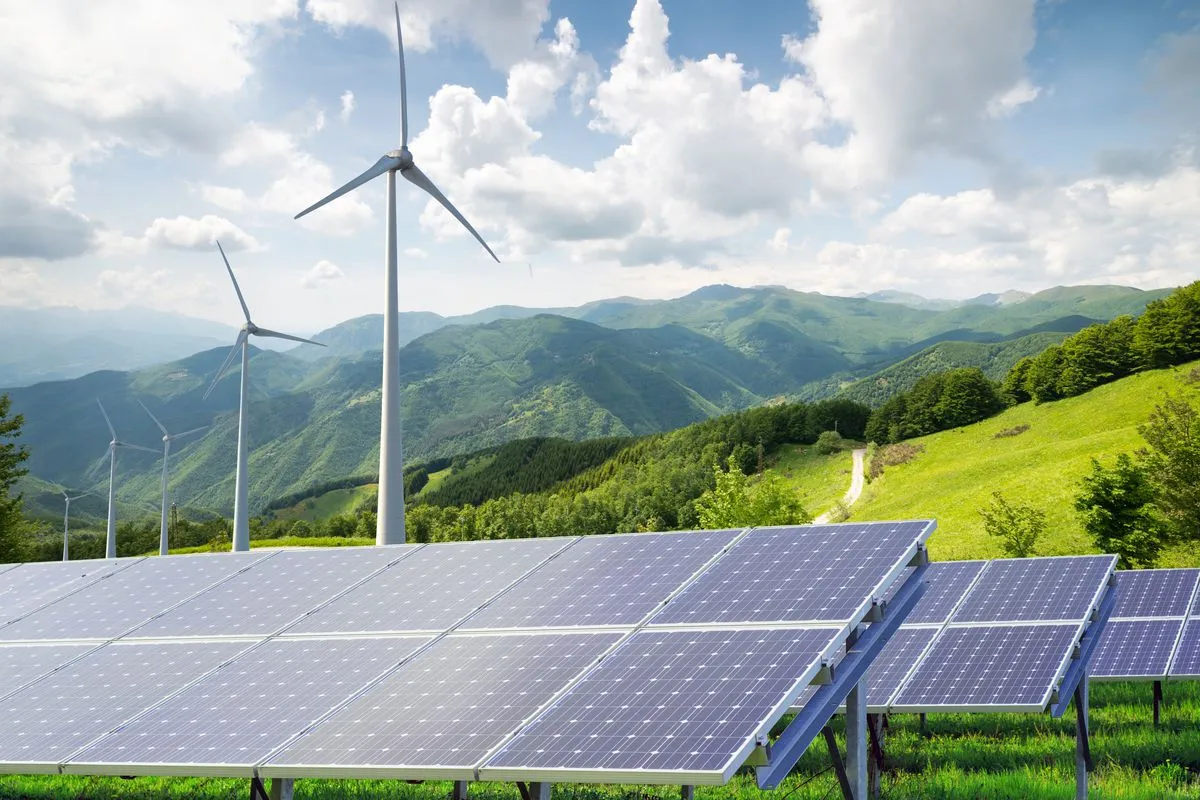Bonner Cohen PhD
Bonner R Cohen is a senior fellow at the Committee For A Constructive Tomorrow, where he concentrates on energy, natural resources, and international relations.
More than 3,500 majestic Joshua trees in California’s Mojave Desert are being shredded onsite to make way for thousands of solar panels under a plan approved by California and Kern County officials.
The sprawling solar project will produce intermittent energy on 2,300 acres of land near the small towns of Boron and Desert Lake. It is not clear whether any of the electricity produced at the solar site will serve some nearby communities. But the project’s developer, California-based Avantus, says contracts have been signed to deliver some of the power to Silicon Valley Clean Energy and Central Coast Community Energy, both are nonprofits that provide green energy to homes in more affluent coastal communities, the Los Angeles Times reported.
Even though many of the trees are estimated to be between 100 and 200 years old, government approval of the solar project in 2021 predated a state decision to protect the Joshua tree under the California Endangered Species Act and last year’s enactment by the legislature of the Joshua Tree Conservation Act, which bans unpermitted killing of the trees. As a result, the targeted trees are defenseless.
Now that the fate of the Joshua trees has been sealed, the developer is at pains to justify the Aratina Solar Project by citing its role in combatting manmade climate change.
“Avantus is working to preserve native Mojave plants like Joshua Trees while also preserving California’s ability to achieve its clean energy goals – and the economic and climate benefits that come with them,” the company said. “While trees will be impacted during project construction, vastly more Joshua Trees are being threatened by climate change caused by rising greenhouse gas emissions, which the Aratina solar project directly addresses.”
The company provides no evidence for its claim that Joshua trees “are being threatened by climate change caused by greenhouse gas emissions.”
In addition to the loss of the Joshua trees, which share the same habitat as the threatened desert tortoise, residents will have to contend with massive amounts of dust that will be kicked up during the project’s construction.
“Let’s destroy the environment to save the environment. That seems to be the mentality,” Deric English, a Boron Junior-Senior High School teacher, told the Los Angeles Times. “It’s hard to comprehend.”
Two recognized subspecies of Joshua trees are native to the Mojave Desert, where they can be found at elevations of 2,000 to 6,000 feet. The trees enjoy varying degrees of protection in the jurisdictions they inhabit, but those protections can be undermined if a favored project, such as a solar plantation, comes along.
A similar fate could befall the Mojave Desert tortoise. In April, in a 4-0 decision, the California Fish and Game Commission voted to list the Mojave Desert tortoise as endangered under the Golden State’s Endangered Species Act. The creature has been listed as threatened under the federal Endangered Species Act since 1990. Even though the tortoise is California’s state reptile, it is being pushed to the brink by various factors, including vehicle strikes, wildfires, raven predation, illegal marijuana growth, and massive solar farm development.
While desert tortoises and Joshua trees are at risk from giant solar arrays on the ground, up in the air, taxpayer-subsidized wind turbines pose a real threat to supposedly protected bald and golden eagles. In February, the Interior Department’s Fish and Wildlife Service updated its rule for an “incidental take” under the Bald and Golden Eagle Protection Act.
“In addition to continuing to authorize specific permits, we created general permits for certain activities under prescribed conditions, including qualifying wind energy projects, power line infrastructure, activities that may disturb breeding bald eagles, and bald eagle nest take,” the FWS states.
In other words, the Bald and Golden Eagle Protection Act is a nice law, but, under certain conditions, wind power developers can go around it by getting permits for the “incidental,” but entirely predictable, killing of the eagles the law is supposed to protect.
To promote renewable energy, FWS officials allow wind turbines to reach hundreds of feet into the air and go up in areas where “protected” eagles are known to fly. And by issuing permits for the “incidental take” of a bird, they acknowledge that some of the eagles will be slaughtered in the turbines’ spinning rotors.
If wind and solar power are making it rough for endangered species on land and in the air, things are no better at sea. On April 14, Maryland Gov. Wes Moore signed an agreement with administration officials to secure more lease areas for offshore wind development in the Atlantic Ocean.
More offshore wind turbines would further complicate the migratory patterns of the endangered right whale. Female right whales migrate from the Northeastern Coast to waters off the Southeast, where they give birth before returning north with their calves. Their path – going and coming – takes them through an area where Richmond, Va.-based Dominion Energy plans to construct 176 turbines as part of its Coastal Virginia Offshore Wind project.
If neighboring Maryland becomes a player in offshore wind, the migrating whales’ journey will become even more perilous.
Lured by generous taxpayer subsidies and encouraged by compliant government officials, wind and solar developers have concluded that endangered species pose little threat to their livelihoods.
This article originally appeared at DC Journal and was republished by CFACT.









